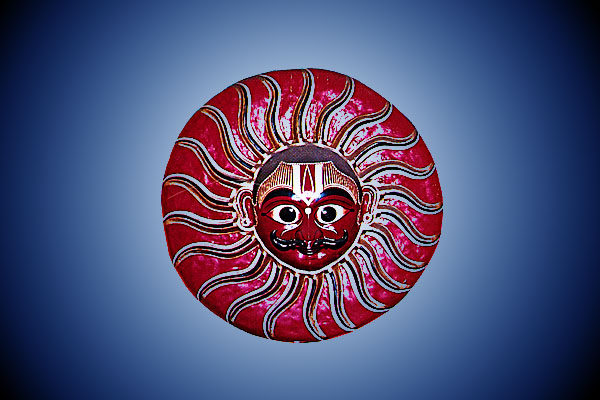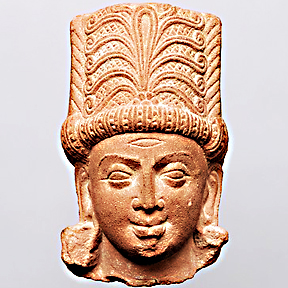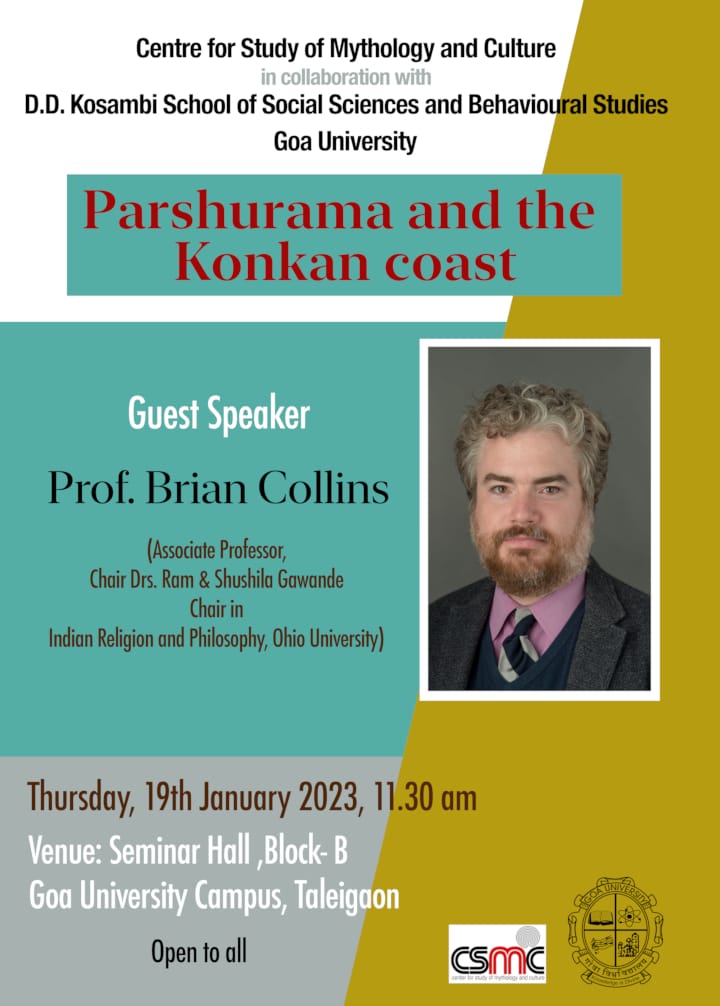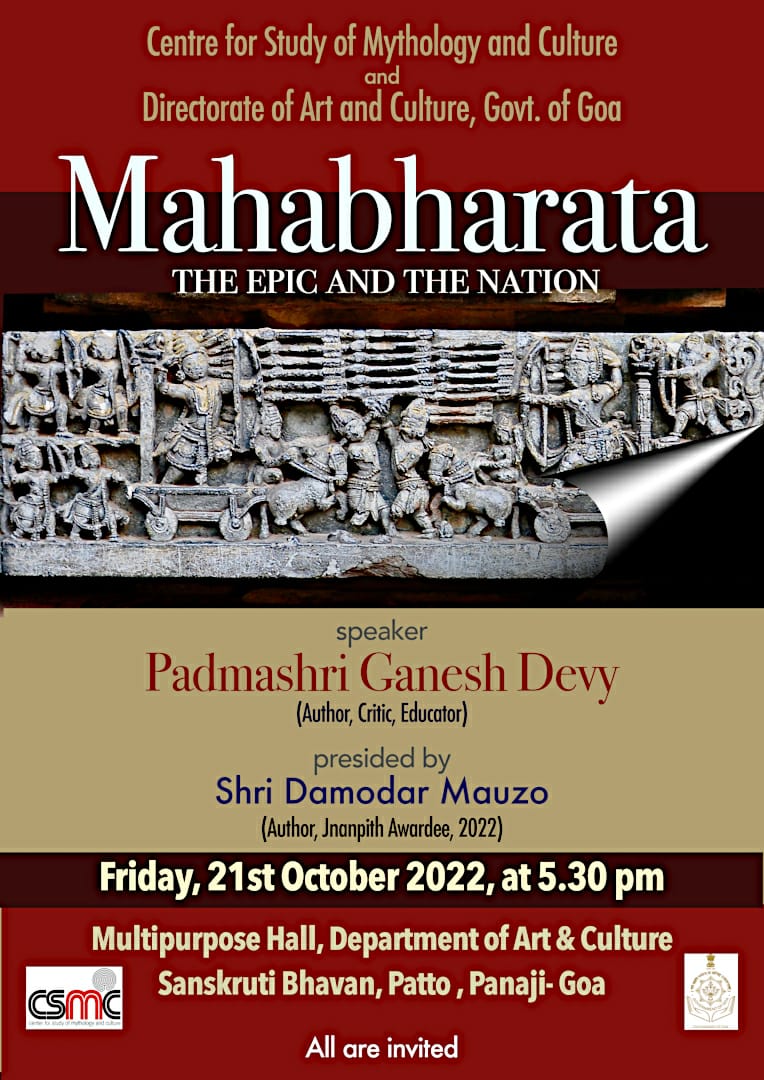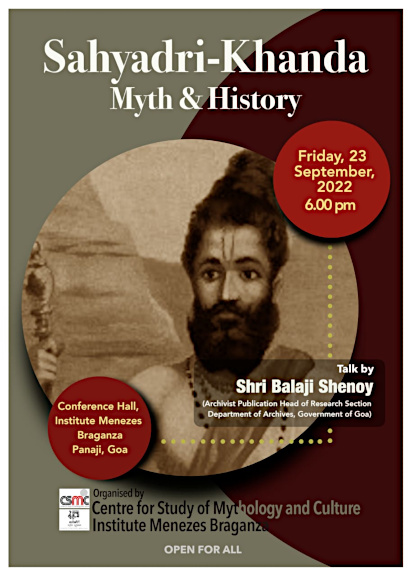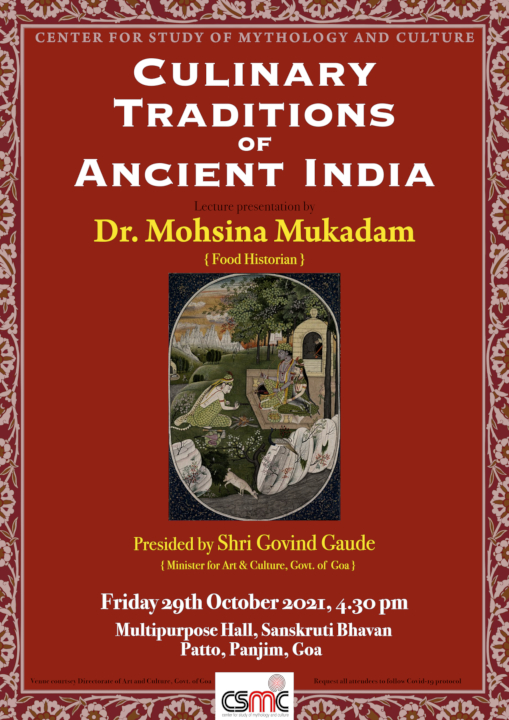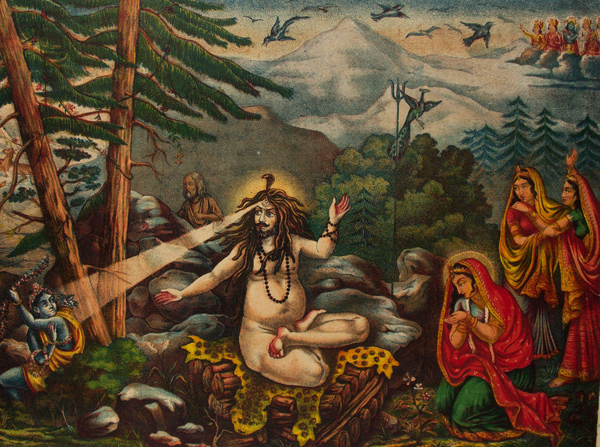 Puranic myths represent Shiva as an ascetic, deep in meditation sitting atop Mountain Kailash. To seek his attention and seduce the ascetic god, Devi performs tapas. But Shiva is unmoved and she seeks the help of Kama, the god of love, who shoots his floral arrow of enchantment, forcing the god to acknowledge his erotic vulnerability. Traditional Puranic narratives highlight this confrontation between Shiva and Kama, the destruction of Kama and the wrath of Shiva to underscore Shiva’s unshakable ascetic nature.
Puranic myths represent Shiva as an ascetic, deep in meditation sitting atop Mountain Kailash. To seek his attention and seduce the ascetic god, Devi performs tapas. But Shiva is unmoved and she seeks the help of Kama, the god of love, who shoots his floral arrow of enchantment, forcing the god to acknowledge his erotic vulnerability. Traditional Puranic narratives highlight this confrontation between Shiva and Kama, the destruction of Kama and the wrath of Shiva to underscore Shiva’s unshakable ascetic nature.
However, South Indian myths especially from the Kanchipuram tradition, change the narrative from Shiva-Kamantaka- the destroyer of Kama, into the follower of Kama- Shiva-Kameshvara- the ‘Lord of desire’. These myths present Shiva passionately meditating on the goddess and surrendering to his desires. The following myth found in the Vaishnava texts, also known as ‘Kanchi flood myth’ narrates how Shiva’s amorous passion in unrestrained form could bring destruction.
Once Shakti came to Shiva and demanded to be seated on his left lap, the way Devi does.* Shiva was amused by the demand, and informed her “You are only a part of Devi and not her.” But she argued “I am part of her and you have to treat me as Devi”. In response Shiva ordained that her clothes slip off, hoping to teach her humility.
Seeing Shakti naked Devi quickly reached out and covered Shiva’s eyes to stop him from desiring her. But Devi’s action angered Shiva who brought forth premature destruction of the world by plunging it into darkness and unleashing pralaya (floods). Due to her impulsive action Devi lost her lustre and her skin turned black (Kali) and she was destroyed in the pralaya.
Devi as Kali was born again as a child in Badarikashirama and was adopted by sage Katyayana. The sage who knew about her previous birth, gave her some sand and water from river Ganga and sent her towards south to a spot where sand would turn into a linga, and the water into milk. Once Devi reached the spot she stopped and performed intense tapas seeking Shiva using the mantra of five arrows which Kama had taught her. She repeated the mantra until the heat of mantra reached Kailash.
Shiva tried to cool the heat of his desire by embracing Shakti, but this was of no help. He bathed in Ganges but that too failed to calm his desire. He sent Ganga to stop Devi from uttering the mantra, and the river came down upon Devi as a mighty flood almost destroying her. As Devi screamed for help, her brother Vishnu came to her help by taking a form reaching up to the heavens thus blocking the river’s advance.
Vishnu told her, “My dear sister, your lord’s unbound passion has turned into flood waters. Embrace the sand linga and you can calm him and bring him down from his fury.” Devi embraced the linga with all her might, leaving scars from her breasts and bracelets upon the linga. Shiva was pleased by her gesture and invited her to sit on his lap. She immediately regained her original lustre, her black skin turned golden, and wished to be married to Shiva. Vishnu obliged, and offered his sister as the bride to Shiva.
—————————-
*According to Hindu iconographic cannon when a female divinity is shown seated on the left lap of the god, it implies a conjugal relationship between two deities.
Story Collected by: Vidya Kamat
Text Source: Tamil temple myths, by David Dean Shulman
Location: Tamil Nadu
Image Source: Wikipedia







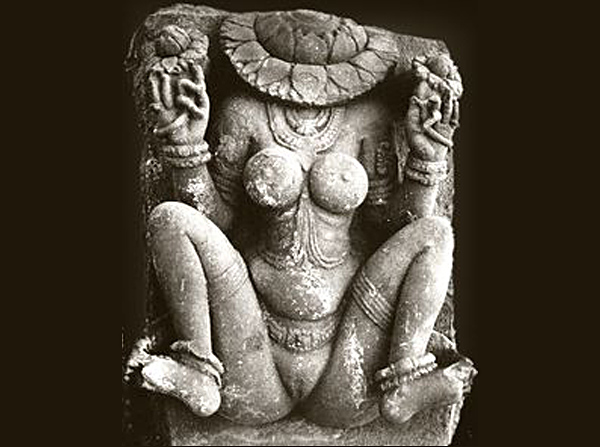
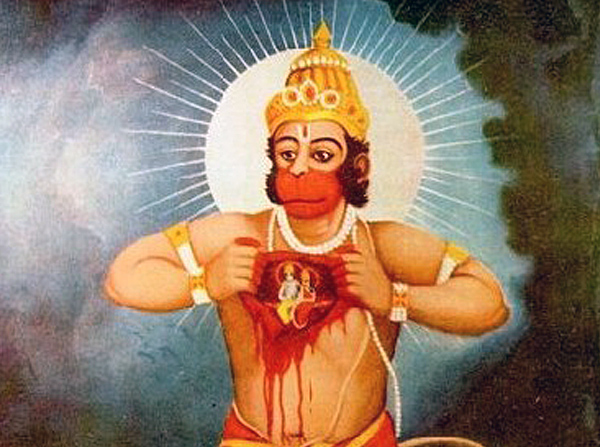 Hanuman and the mind immediately conjures up an image of him carrying the Sanjeevani mountain or kneeling at the feet of Lord Rama and Sita. Hanuman is the most favourite god in the Hindu pantheon in the recent times. He belongs to the tribe called Kimpurushas who are mystical beings that are half animal and half human. Did you know that Hanuman fought his first battle when he was still in his womb?
Hanuman and the mind immediately conjures up an image of him carrying the Sanjeevani mountain or kneeling at the feet of Lord Rama and Sita. Hanuman is the most favourite god in the Hindu pantheon in the recent times. He belongs to the tribe called Kimpurushas who are mystical beings that are half animal and half human. Did you know that Hanuman fought his first battle when he was still in his womb?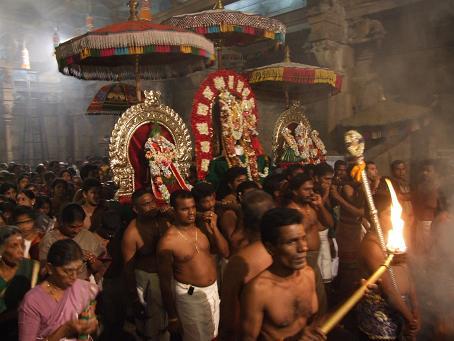 This is a story about Holika, an Asura and how her end was plotted with the help of the gods.
This is a story about Holika, an Asura and how her end was plotted with the help of the gods.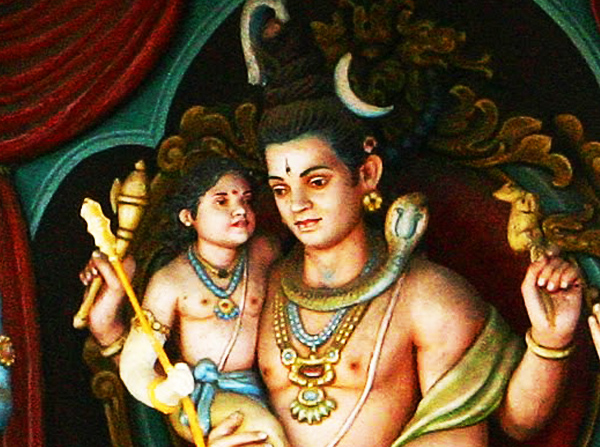
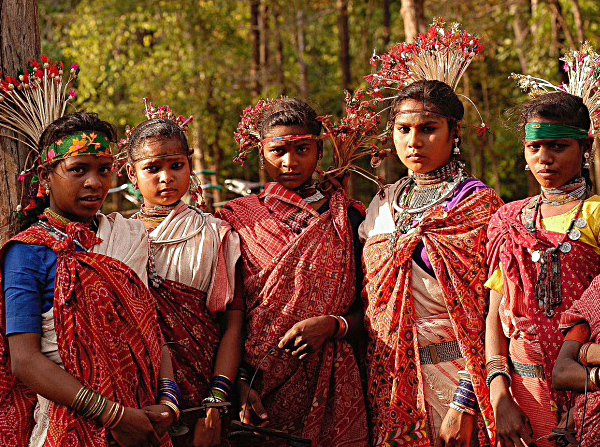 Stories where in the beginning only women lived on earth without companionship of men is found across ancient mythologies. In this women- centric realm, men not only lose their position of power but are relegated to the position of slaves or victims of magic by which they service women in all kinds of jobs. Examples such as Amazonian women in Homer’s Illiad were sought and found somewhere near Lycia. Diodorus mentions that the Amazons travelled from the Libya under Queen Myrina. People living under the rule of women suggest that in ancient cultures, matriarchal systems were the first social order of world. Arab geographers describe a great town in an island in the western ocean, which was free of men. Also similar ideas can be found in ancient Chinese, and Polynesian mythologies.
Stories where in the beginning only women lived on earth without companionship of men is found across ancient mythologies. In this women- centric realm, men not only lose their position of power but are relegated to the position of slaves or victims of magic by which they service women in all kinds of jobs. Examples such as Amazonian women in Homer’s Illiad were sought and found somewhere near Lycia. Diodorus mentions that the Amazons travelled from the Libya under Queen Myrina. People living under the rule of women suggest that in ancient cultures, matriarchal systems were the first social order of world. Arab geographers describe a great town in an island in the western ocean, which was free of men. Also similar ideas can be found in ancient Chinese, and Polynesian mythologies.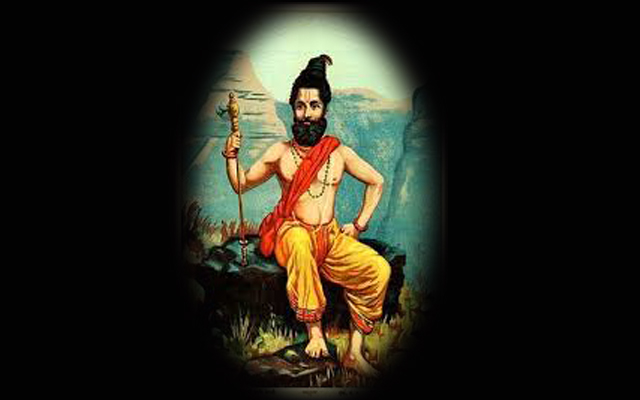 Parashuram was the son of Jamadagni and Renuka. His story is a part of the epic literature and Parashuram is often cited for his unfailing loyalty to his father. Jamadagni was a Brahmin while Renuka belonged to the Kshatriya, or the warrior clan. Parashuram was a great worshipper of Shiva. He was a master at weaponry and is believed to have been teacher to the epic greats, Guru Dronacharya, Karna and Arjuna.
Parashuram was the son of Jamadagni and Renuka. His story is a part of the epic literature and Parashuram is often cited for his unfailing loyalty to his father. Jamadagni was a Brahmin while Renuka belonged to the Kshatriya, or the warrior clan. Parashuram was a great worshipper of Shiva. He was a master at weaponry and is believed to have been teacher to the epic greats, Guru Dronacharya, Karna and Arjuna.